Cooking Grains Made Easy

If you've been reading this blog for a while, then you will have surmised that I am a fan of grains and all things grain-like. And I am! There is so much to like about them: they are generally inexpensive, nutritious, flavourful, and there are so many varieties. I promise that I will never tout a grain-free or carb-free diet. Ever. And you can hold me to account if I start spouting against grains! That is not to say that I hold any judgement against anyone who chooses to forgo the wonders of grains and carbohydrates, to each his or her own I say, and more for me!

Grains, and seeds that are referred to as pseudo-grains (of which quinoa and buckwheat are part of) are full of goodness. They contain their fair share of protein, on top of being chockfull of fibre and minerals, and should be given a larger spot in our plates. We are all familiar with grains such as wheat, rice and barley, however, even these often put off seasoned cooks, as the cooking process can sometimes be hit or miss. The following cooking guidelines should demystify the whole process: they are tried and tested methods that have worked for me in all sorts of situations, from state of the art kitchens to rickety camping stoves. If you have insight on different cooking method, please do leave your own tips and tricks in the comment section below.
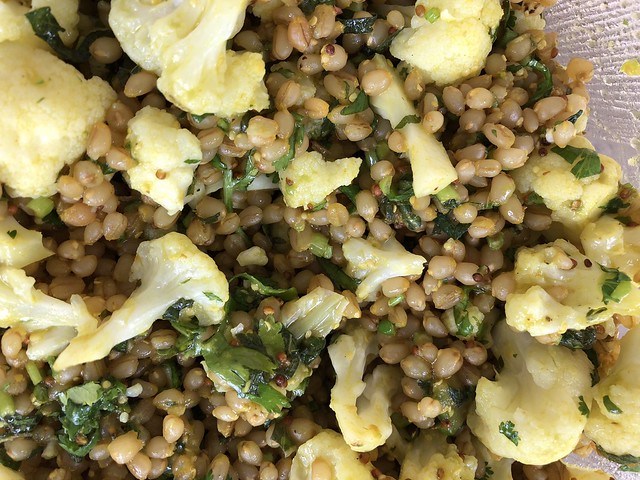
Whole Grains, such as wheat berries in all their guises (soft or hard wheat, farro, spelt, kamut...), brown rice and pot barley (not to be confused with pearl barley, of which I write further down), are minimally processed, and therefore, if cooked in large amounts of boiling water, as it is most often recommended, can take an hour or more to cook to a soft, chewy texture. Which is not ideal. However, the cooking time can be drastically cut back by soaking whole grains: cover in ample water, and let sit for at least two hours, ideally overnight, and up to three days, changing the water daily. This last step is less important in cooler weather, however, during the summer, spontaneous fermentation can be triggered if the soaking water is not changed regularly. If water waste is a concern, this water can be used for watering plants, washing up, cooking other foods, or even chilled and drunk -this liquid is essentially raw barley water. The extended soaking period triggers the sprouting process, which softens the starches in the grain, activates enzyme that break down the starches into simple sugars, and releases micro-nutrients, essentially making the grain much more digestible.

When ready to cook, drain, and measure out the volume (how many cupfuls you have). Place in thick bottom pan, and add one and a half times the volume of water. Season with salt, if desired, and bring up to the boil. Once the water has come up to a proper boil, turn the heat down to medium-low, and cover with a lid. Leave to simmer for about 15-20 minutes before checking if the grains are cooked through. Brown rice usually absorbs all of its cooking water, whereas wheat rarely does, in either case the grain should be soft inside with a chewy exterior. Drain off any cooking water, and serve hot, or leave to cool down completely to mix into salads or freeze in portions for a later use.

Other grains that benefit from an albeit shorter soak are wild rice, pearl barley, millet and raw buckwheat (not to be confused with kasha, which is toasted buckwheat): one hour of soaking tops, and a 15-20 minute boil in ample water. Although these grains -and most likely a slew of others I have not yet met- can be cooked in more or less an hour without soaking, there are several pros to pre-soaking grains. A one hour steep might not be quite enough time for the grain's natural enzyme to break down all the starches, it does plump up the grains which result in far fewer blown kernels: I don't know about you, but I find wild rice with both ends exploded a little underwhelming. As for pearl barley, the difference with pot barley is small, yet not minimal: most barley grown for human consumption is covered in a stubborn and inedible hull, which needs to be milled before eating. Pot barley, also called Scotch barley, is milled for a shorter period, just enough to remove the hull; it is higher in fibre, takes longer to be digested (and therefore will keep you full for a longer period), and because it still retains it chaff, it tends not to overcook and turn to mush. Pearl barley is not without merit: aside from cooking in less time, its starch is more readily released, making it an ideal substitute -and somewhat more nutritious- alternative to white rice for risotto.
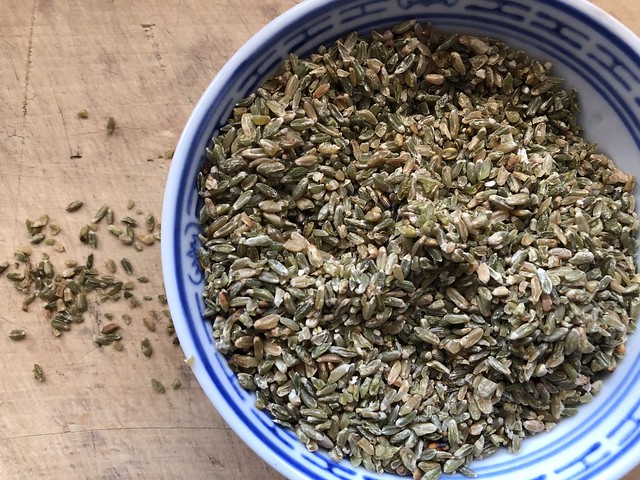
Cracked wheat, such as bulgur and freekeh do not need to be soaked before being cooked. In fact, bulgur barely needs any cooking, since it is technically par-cooked before being dried and packaged, much like couscous. Place a measure of bulgur in a heat proof bowl and pour over with an equal measure of boiling water; cover with a lid or cling film, and let sit for 5-10 minutes or until ready to serve. Freekeh, on the other hand, requires a little bit more effort: although the immature wheat is toasted over fire, the heat's main purpose is to dry out the kernels for cracking, not actual cooking; it can be cooked in ample water for about 15 minutes, like pasta, or by the absorption method, as per white rice.
Cooking white rice can be a contentious subject: there are as many methods of cooking rice as there are people who eat it, and each has their pros and cons. I could practically write an entire blog post on cooking rice, and depending on how long this paragraph ends up being, I just might... The immersion method, most commonly used by Europeans (and derisively called "the white people method" by non-Caucasians), is basically how most people cook pasta: ample boiling water, raw rice thrown in, boiled until cooked, drained, and often rinsed under cold water. This method is useful when rice is being cooked ahead of time to be reheated later or for mixing into salads. Personally, I never cook white rice this way -hence the lack of cooking time- because it washes away so much starch (and nutrients) that the rice barely holds together on a fork. And for salads, I prefer the texture of brown or wild rice.
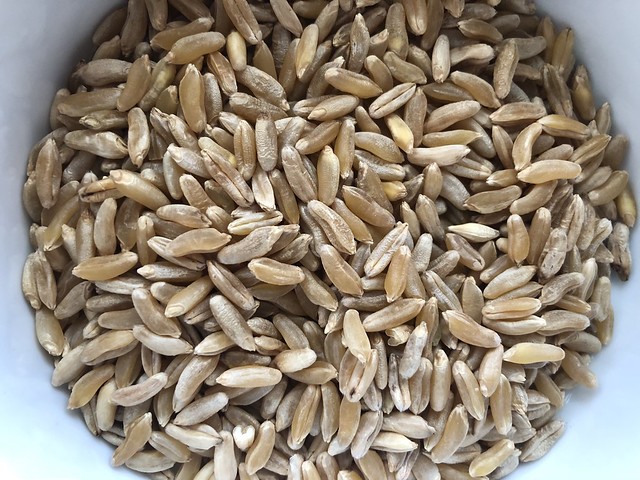
The absorption method of cooking rice is the most common approach to cooking white rice. Because no cooking liquor is thrown away, each grain of rice conserves its own starch, rendering it sticky enough to eat with fingers, chopsticks or for rolling up into sushi. The greatest thing about this cooking method is that it works for many types of rice, whether short or long grain, white, black or red. White rice should be rinsed in several changes of clean water to get rid of fines (flour resulting from the milling process -not, as it is often referred to, starch): these fines are perfectly edible, but they can result in pasty -though not necessarily overcooked- rice. Once rinsed, drain the the rice well, and measure out the volume. Place in a thick bottom pan with an equal measure of cold water. Cover with a lid, and let sit for 10 minutes for long grain rice, 30 minutes for short grain rice. Once rested, bring up to a boil. When steam starts shooting out from under the lid, turn the heat down to medium-low on an electric hob or as low as possible on a gas cooker. Leave to simmer gently for 15 minutes. Leave to rest, covered, for 10 minutes or until ready to serve. Gently fluff with a fork or a spatula.
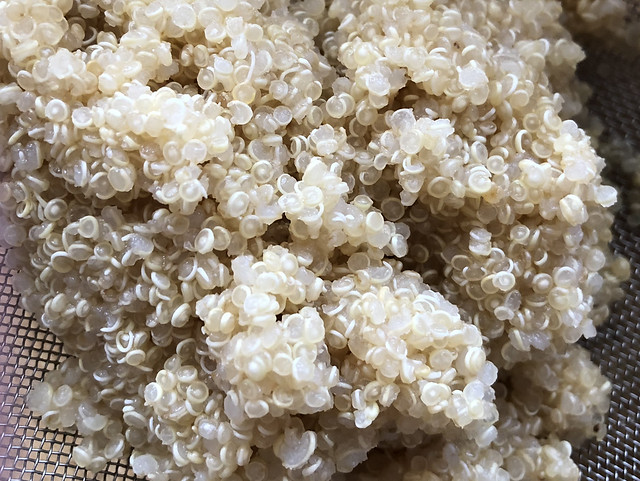
Quinoa has changed quite a bit since the late '80s: when I was first introduced to this seed, it was rather difficult to find, and it needed to be washed in several changes of water before it was ready to cook. Quinoa seeds are coated in saponin, a surfactant, and unless removed will cause the cooking liquor to froth like a bubble bath and give the quinoa a bitter taste. Though I have not seen unwashed quinoa in recent years, it is easy to spot: the soapy stuff has a buff, pale tan colour, whereas the washed stuff is a bright off-white. I'm not sure how to tell whether or not red and black quinoa are washed, but they've also never foamed up for me, so I think it is generally safe to assume that all quinoa available nowadays is washed. Quinoa can be cooked by absorption just like white rice, or by immersion, for about 10, and left to rest in the cooking liquor for a further 10 minutes. Drain before serving.

Kasha is a bit of a quandary to me: for years, I would eat it in Polish restaurants and truly enjoy it, only to be disappointed by the porridgy consistency when I tried cooking it at home. It wasn't until I read the Wikipedia entry for kasha that the mystery started to lift: in essence, buckwheat itself is referred to as kasha in Eastern Europe, whereas in English, the word designates toasted buckwheat groats only, so kasha on a restaurant menu or in an imported package may or may not be the roasted stuff. Despite its name, buckwheat is neither a wheat nor a cereal -it is actually a relative of rhubarb and sorrel- so its starch and protein differ from wheat in that they do not bind together as willingly, which is why most commercially available soba noodles contain some wheat flour. It also explains why toasted groats tend to fall apart at any attempt to cook them further: I've tried cooking them like bulgur, and microwaving to no avail. I have had okay results with a three day soaking, then microwaving in equal volume water for two minutes. However, if anyone knows how best to cook toasted buckwheat so that each kernel remains whole, please let me know!
In the meantime, Bon App'!

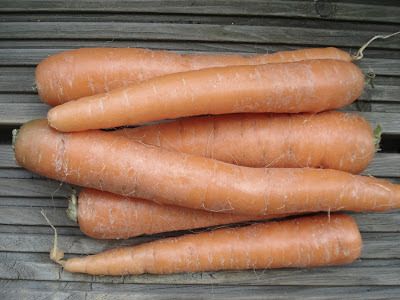

Comments
Post a Comment